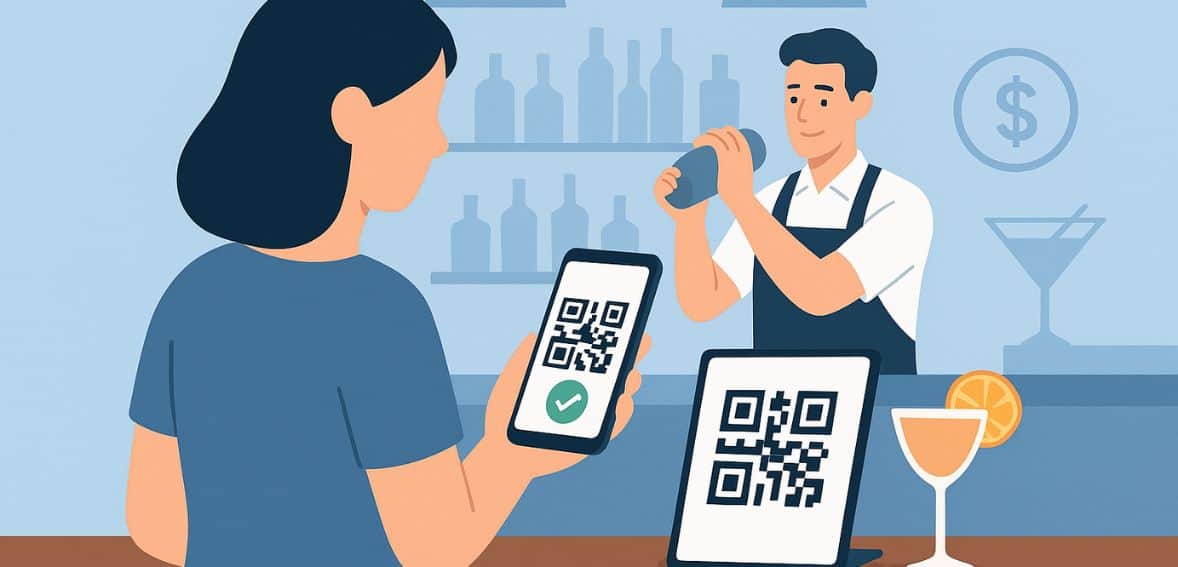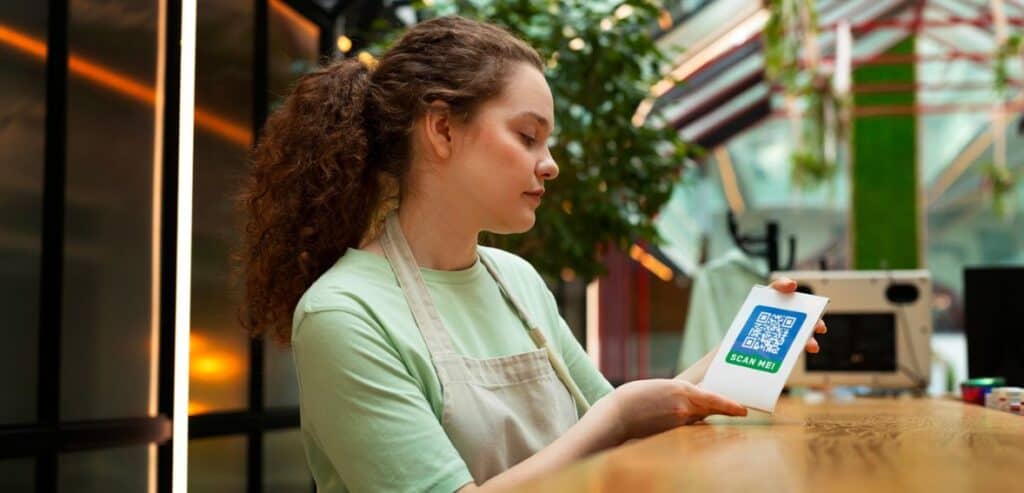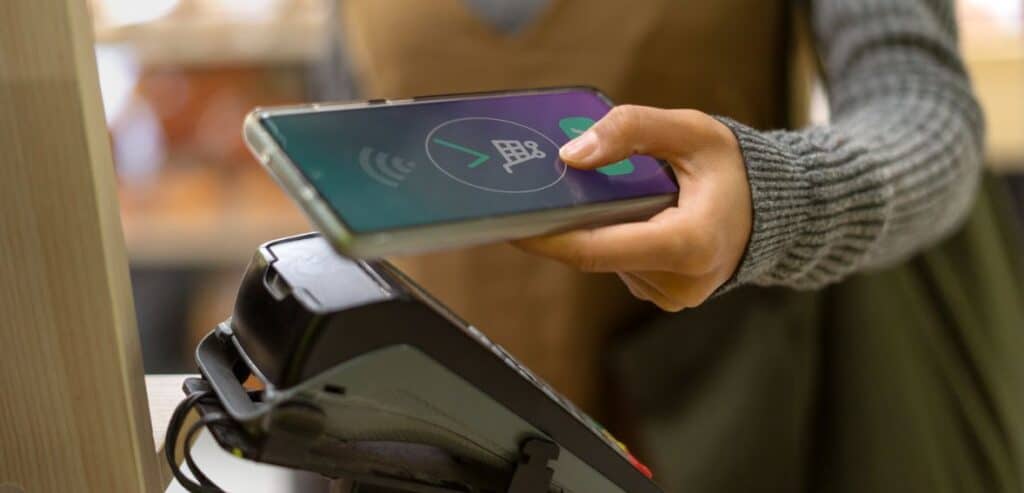
By alphacardprocess September 24, 2025
Bars are not an exception to how technology has changed the hospitality industry in recent years. Once a specialized tool for advertising campaigns, QR codes are now a flexible way to implement ordering and payment systems. Bars can improve customer satisfaction, cut down on wait times, and streamline operations by enabling customers to scan a code with their smartphone, view menus, place orders, and pay digitally.
This technology is in line with changing consumer preferences, particularly those of younger generations who demand speed, ease, and little in the way of physical contact. While QR codes offer bar owners and managers the chance to maximize employee productivity, enhance order accuracy, and gather useful data, they also pose operational difficulties that need careful consideration.
The Evolution of Digital Ordering in Bars

In the past, ordering at bars was done by hand. Customers would approach a server or the counter, place their order, and then wait for their food or drinks to be delivered. Even though this procedure was well-known, it frequently resulted in inefficiencies like higher labor costs, staff-customer misunderstandings, and delayed service during peak hours.
Table service in restaurants was the original focus of digital solutions, but bars needed a system that could manage quick transactions because of their high order turnover and dynamic environment.
Because they provide a scalable way to enable digital menus, easy ordering, and integrated payments, QR codes are a perfect fit for this niche. Bars discovered that QR-based systems could lower friction for both employees and customers while meeting modern customer expectations as technology adoption accelerated.
How QR Codes Work for Ordering and Payments
The QR code mechanism is simple but effective. Usually printed on a menu, coaster, or tabletop, a QR code encodes a URL that takes users to a smartphone interface. Customers can browse the menu, personalize orders, and add products to a virtual cart using this interface.
Payment can be made immediately after the order is complete using integrated digital payment platforms, such as mobile wallets, debit cards, or credit cards. Orders are then sent to the kitchen display or bar’s point-of-sale system, which minimizes verbal communication errors.
Convenience, speed, and accuracy are combined in the smooth integration of QR codes for ordering and payment, revolutionizing the way customers engage with bar service.
Improving Efficiency and Reducing Wait Times
Operational efficiency is one of the biggest advantages of QR code systems in bars. The volume of orders placed during special events or busy evenings can overwhelm servers and bartenders. Long lines, delayed drink delivery, and unhappy clients are common outcomes of traditional methods.
Customers can place orders using QR codes right from their table or barstool, freeing up staff members to concentrate on serving and preparing food rather than taking individual orders. Service is sped up and errors are decreased by doing away with paper tickets and verbal instructions.
Furthermore, integrated payment systems reduce the amount of time needed to settle invoices, which, particularly in busy settings, enables quicker table turnover, higher sales, and a more seamless overall customer experience.
Enhancing the Customer Experience

Additionally, QR codes significantly improve the consumer experience. Convenience, speed, and flexibility are important to modern customers, and digital ordering lets them browse menus at their own pace. Without having to wait for a server, customers can view broad descriptions, ingredients, and prices, which lowers wait times and boosts customer satisfaction.
The ability to digitally customize orders boosts trust and confidence for people with dietary preferences or restrictions. Additionally, contactless transactions—a feature that is becoming more and more crucial in a post-pandemic world—are supported by QR codes, giving customers a sense of security and control over their interactions.
Bars can satisfy changing expectations while preserving a welcoming and pleasurable ambiance by offering a smooth, self-directed ordering experience.
Operational Challenges and Considerations
QR code systems have drawbacks despite their benefits. Strong POS integration and dependable internet access are necessary for a successful deployment. In order to reflect availability, price adjustments, or promotions, bars must make sure that their digital menus are updated instantly. To handle the transition and resolve technical problems, staff training is crucial.
Additionally, users with different levels of technological proficiency must be able to easily navigate the system. A hybrid strategy that preserves traditional ordering options is required because some customers might be reluctant or unable to use QR codes. To make sure that the technology improves rather than detracts from the overall bar experience, it is imperative to address these operational considerations.
Staff Adaptation and Training
The adoption of QR code ordering and payment systems transforms the role of bar staff. Instead of focusing primarily on order-taking, staff can dedicate more attention to preparation, customer engagement, and ensuring timely delivery. Training becomes essential, not only to familiarize employees with the technology but also to equip them to assist patrons who may be unfamiliar or encounter technical difficulties.
Staff must understand how to reconcile digital orders with inventory management and handle payment confirmations efficiently. By fostering a positive relationship between employees and the technology, bars can maximize the benefits of QR codes while minimizing disruptions. A well-trained staff ensures a smooth transition and maintains high levels of customer service.
Integration with Point-of-Sale Systems

QR codes must work together with the bar’s current point-of-sale system in order to be successful. Integration guarantees accurate generation of sales reports, automatic updating of inventory levels, and proper routing of digital orders to bartenders or kitchen employees.
Additionally, bars can use integrated systems to examine payment methods, peak hours, and ordering trends, giving them important information for marketing and operational planning. Orders using QR codes can cause confusion, increase errors, and interfere with workflow if they are not properly integrated.
A seamless digital experience that benefits employees and customers while preserving operational efficiency is ensured by making compatible system investments and collaborating closely with vendors. Integration works best when bars are already using the best POS system for bars, since reliable software ensures accurate reporting, smooth order routing, and stronger overall efficiency.
Marketing and Customer Engagement Opportunities
In addition to their operational advantages, QR codes open up new avenues for engagement and marketing. To encourage more purchases, digital interfaces can show loyalty plans, promotions, or signature cocktails. Bars can learn patron preferences, making tailored suggestions and encouraging return business.
QR codes also make it possible to collect feedback instantly, which helps managers track employee satisfaction and pinpoint areas that need work. Bars can improve customer relations and foster brand loyalty by connecting QR systems to CRM platforms or customer databases. Convenience, customization, and data-driven interaction make QR codes a strategic tool that goes beyond easy payment and ordering.
Payment Security and Compliance
QR code-based digital payments bring up significant security and compliance issues. In order to protect cardholder data, bars must make sure that every transaction is encrypted and complies with industry standards. The chance of fraud or data breaches is reduced by integrating with secure payment gateways. Regulations like PCI DSS standards must be followed in order to safeguard the company and its customers.
Additionally, open and honest communication with clients regarding payment security promotes system confidence. Strong security procedures are essential to avert potential vulnerabilities and preserve the integrity of the bar’s financial operations, even though digital payments simplify operations and minimize the need for cash handling.
Reducing Cash Handling and Operational Costs
The decrease in cash handling is one obvious advantage of ordering and payment systems based on QR codes. Errors, theft, and the time required for cash counting, reconciliation, and deposit are all reduced when there are fewer cash transactions.
Faster tip and gratuity distribution is another benefit of digital payments, which are frequently incorporated directly into payroll or point-of-sale reporting. This guarantees that workers are fairly compensated for their services while lowering administrative costs and increasing transparency.
Additionally, reducing cash transactions can improve overall productivity because employees can spend more time interacting with customers or processing orders rather than handling actual payments. Modern bars find QR codes especially appealing due to the operational and financial benefits of cashless systems.
Data Insights and Business Intelligence

QR code systems generate a wealth of data that bars can leverage to improve operations. Information on ordering frequency, popular menu items, peak hours, and payment methods provides actionable insights.
By analyzing this data, managers can optimize staffing schedules, adjust inventory, and plan targeted promotions. Long-term trend analysis also allows bars to anticipate demand patterns and make informed decisions about menu changes or pricing strategies .
Data-driven decision-making enhances operational efficiency and profitability while ensuring that patrons’ preferences are accurately reflected in the service offering. Integrating analytics with QR ordering systems transforms raw transaction data into meaningful insights for strategic planning and customer satisfaction.
Customer Demographics and Adoption Trends
Understanding customer demographics is crucial when implementing QR code systems. Younger generations, such as millennials and Gen Z, are typically more comfortable with smartphone-based ordering and digital payments. However, older patrons or those less tech-savvy may prefer traditional methods.
Bars must balance adoption trends with inclusivity, offering support or alternative options when necessary. Observing usage patterns over time allows bars to tailor the interface, menu presentation, and promotional strategies to maximize engagement.
Educating patrons on the benefits of QR ordering, while maintaining staff availability to assist, ensures widespread adoption and minimizes frustration, creating a more seamless and enjoyable experience for all customer segments.
Personalization and Upselling Opportunities
QR code systems enable personalized experiences that were difficult to achieve with traditional service methods. Digital menus can suggest add-ons, premium drinks, or complementary items based on previous orders or popular choices. Patrons can customize their selections, enhancing satisfaction and increasing average order value.
Personalized recommendations can subtly guide purchasing behavior, encouraging upselling without pressuring customers. By leveraging data on preferences and purchase history, bars can create a curated experience that feels tailored to individual patrons, improving both revenue and loyalty.
The digital interface allows for dynamic content, promotions, and seasonal offerings that adapt in real time, keeping the menu fresh and engaging while driving incremental sales.
Hygiene and Contactless Service

One of the key benefits of QR code ordering, particularly highlighted during public health concerns, is the reduction of physical contact. Patrons can view menus, place orders, and pay without touching shared surfaces or exchanging cash. This contactless approach improves hygiene, reassuring customers who are mindful of cleanliness.
It also reduces the physical burden on staff, who no longer handle multiple receipts, cash, or menus throughout a busy shift. By minimizing contact, bars can maintain higher standards of sanitation, enhance customer confidence, and contribute to a safer, more modern service environment that aligns with evolving public expectations.
Challenges in Implementation
Despite the advantages, QR code systems require thoughtful planning and ongoing maintenance. Bars must ensure reliable Wi-Fi coverage and device compatibility, as network failures can disrupt service. Menu updates, pricing changes, and item availability must be reflected in real time to avoid errors.
Staff must be trained to assist patrons, resolve technical issues, and reconcile digital orders. Additionally, bars must consider system costs, subscription fees, and integration with existing POS infrastructure. Balancing technological investment with operational benefits requires careful evaluation.
Successful implementation involves continuous monitoring, feedback collection, and adaptation to ensure that the system improves efficiency without introducing new complications.
Future Trends in Bar Technology
Looking ahead, QR code systems are likely to integrate further with emerging technologies. Artificial intelligence could suggest menu items based on preferences or predict peak ordering times to optimize staffing.
Mobile apps may offer loyalty rewards, gamification, and social sharing features linked to QR ordering. Integration with augmented reality or interactive menus could provide an immersive experience for patrons. Bars may also combine QR ordering with smart inventory management, automatically tracking stock levels and forecasting demand.
As digital transformation continues, QR codes will serve as a foundation for Innovative service models that improve efficiency, enhance customer satisfaction, and provide actionable insights for operators.
Conclusion
The bar experience has been completely transformed by QR codes, which provide a smooth way for customers and employees to place orders and make payments. Bars can improve customer satisfaction, lower operating costs, and streamline workflows by enabling contactless, accurate, and efficient transactions.
Thorough planning, strong POS integration, employee training, and consideration of security and accessibility are all necessary for a successful deployment. QR codes are a vital tool in modern hospitality because of their capacity to collect data, customize experiences, and enhance service.
Bars that use QR ordering and payment systems will be well-positioned to prosper in a more digital and competitive environment as technology develops and consumer expectations continue to change. They will provide convenience, efficiency, and an exceptional customer experience.